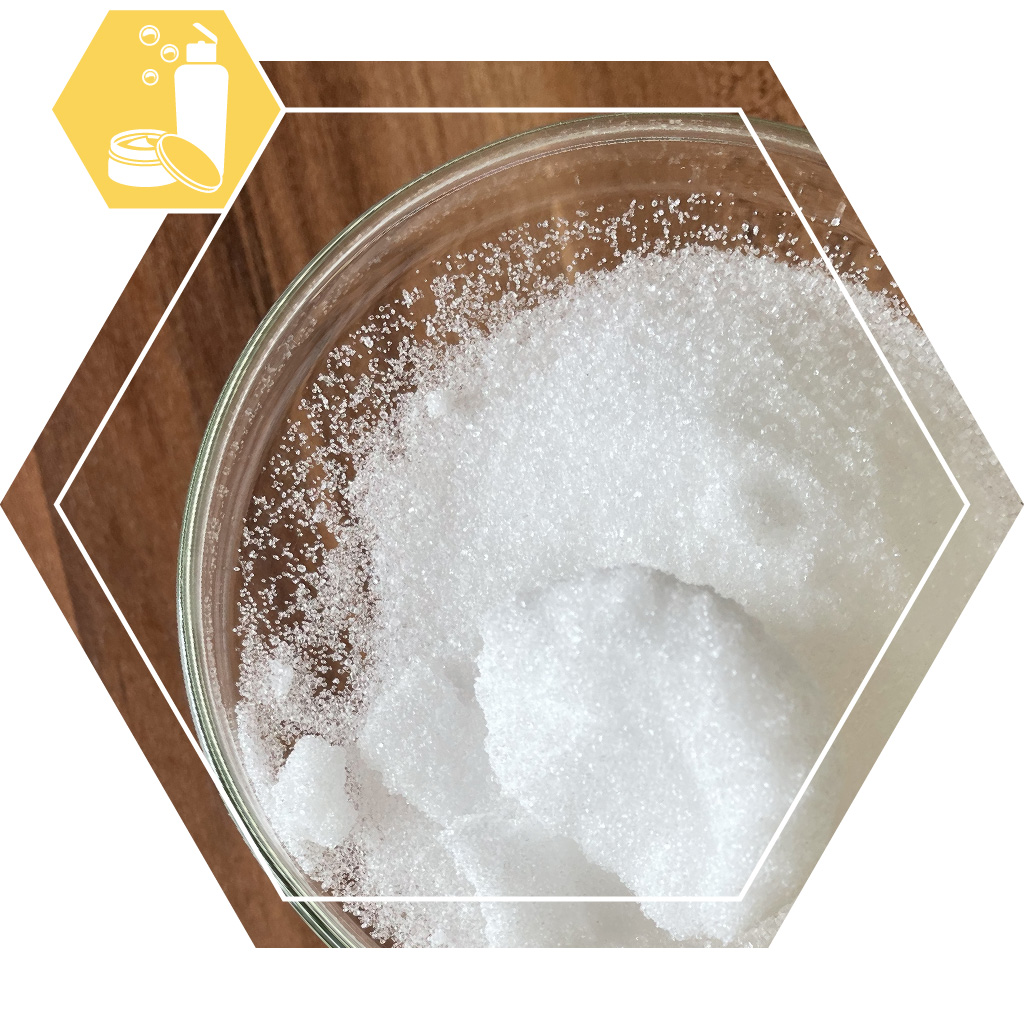Cosmetics raw material
Description
Citric acid anhydrous is a raw material for various types of cosmetics.
Use
Citric acid anhydrous you use mainly for adjusting the pH (acidity). Because the skin is naturally quite acidic it often tolerates acidic cosmetics better than non-acidic cosmetics. In addition, lowering the acidity level prevents spoilage, although a preservative should also be used for this purpose.
Combined with sodium bicarbonate, citric acid is used in effervescent products such as bath bombs. Together with water, this combination forms carbon dioxide, which creates the bubbles.
There are cosmetic substances that only work well in a more acidic environment, Hexaderm LSH for example and some preservatives, such as sodium benzoate.
Finally, it is a chelating agent, binding small amounts of metals that may be present in the raw materials. This is useful to prevent metals from affecting some substances. The disadvantage is that pigments and other substances containing these metals may be affected by it.
Non-cosmetic uses.
There are several other applications for citric acid, for example in the chemical volcano or 2% citric acid dissolved in water as a stop bath in the darkroom.
Citric acid can be used for descaling. Some metals do not tolerate it, so always consult the manufacturer or supplier first.
De Hekserij does not sell products intended for use in food or for other internal use. This product is NOT an exception.
Properties
Citric Acid Anhydrous is the anhydrous form of citric acid and contains no water. It is a solid, almost white substance that dissolves easily in water. The purity is > 99%. It is a fine crystal powder, it lasts quite long: keep it cool, dry and dark.
Durability
Citric acid is made by fermentation of sugar after which the citric acid is purified. The substance is common in nature: all green plants contain it because it plays an important role in converting sunlight into energy for the plant. Citric acid is highly biodegradable in the environment.
Dangers
Citric acid anhydrous is classified as dangerous substance with the following characteristics:
WARNING
H319 - Causes serious eye irritation.
Keep out of reach of children.
Codes
Article number: 13014
Dutch name: Citroenzuur
EC number: 201-069-1
CAS number EU: 77-92-9
CAS number TSCA: 77-92-9
INCI: CITRIC ACID




